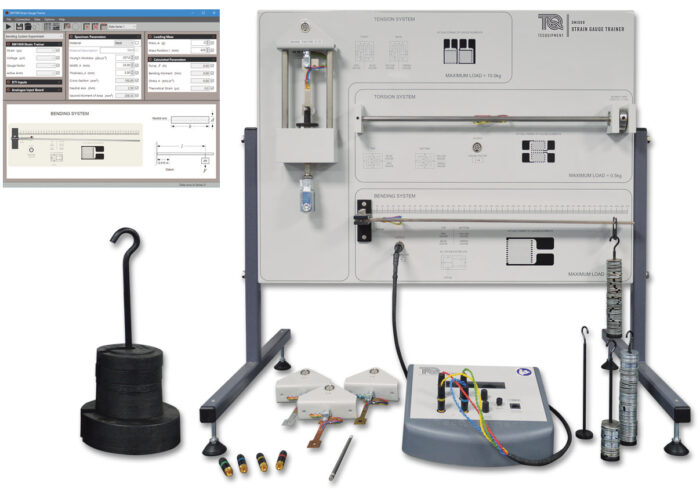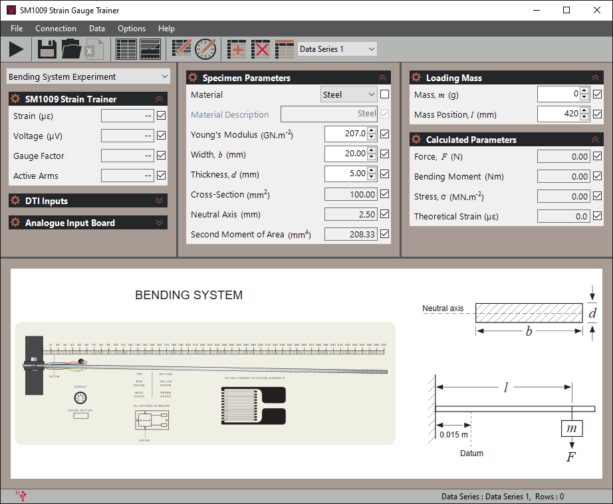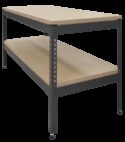Experiment
SM1009

STRAIN GAUGE TRAINER
Bench mounted bending system to test tension, torsion and bending to illustrate how resistance strain gauges work and methods of measuring strains in different structures. Can be used to demonstrate Young's modulus and Poisson's ratio.
If you have any questions or you'd like to discuss a product, please call us.
+44 1159 722 611STRAIN GAUGE TRAINER
The compact Strain Gauge Trainer fits on a bench or desktop. It contains everything needed to show students how resistance strain gauges work on three different structures. It is ideal for groups of two or more students to do experiments and for classroom demonstrations.
Students use the small set of masses to load the bending and torsion systems, and the large set of masses to load the tension system. They use theory and known dimensions to calculate the stresses and strains and compare them with the strains measured by the strain gauges. Students can also connect and compare the performance of quarter, half and full-bridge strain gauge connections for each structure.
The bending system uses gauges to measure direct tensile and compression strain. The torsion system shows the use of shear/torque strain gauges. The tension system shows the use of two gauges at right angles in a ‘Tee’ rosette. For more tests with the tension system, TecQuipment can supply optional tension test specimens made of different metals. Students then use their experience from other experiments to calculate and test strains in the different metals and find their values of Young’s modulus. The tension system also finds and proves Poisson’s ratio for tensile and compressive strains in metals.
The strain display includes a set of high-accuracy dummy strain gauge resistors (plugs) and controls. These allow the student to connect the strain gauges on the structures as quarter, half or full-bridge networks. The strain display works with and gives correct readings for all bridge connections and different gauge factors. An extra setting on the strain display works with the tension system to prove Poisson’s ratio. The strain display has a socket for connection to TecQuipment’s optional Versatile Data Acquisition System (VDAS®).
The trainer shows students different types of strain gauges. A clear, hard-wearing coating protects each gauge from accidental damage and the environment. Enlarged mimic diagrams on the back plate of the trainer show students what each gauge looks like, how it connects and how it fits on each structure. This helps to show students how it works.
For quick and reliable experiment results, TecQuipment’s optional VDAS® gives accurate real-time data capture, monitoring and display, calculation and charting of all the important readings on a computer (computer not included).
The user guide (supplied) shows how to use the equipment and includes theory and experiments.
Learning outcomes
- Introduction to the equipment and the different bridge connections (quarter, half and full-bridge)
- Strains and stresses in a bending system
- Strains and stresses in a torsion system
- Strains and stresses in a tension system, Poisson’s ratio and Young’s modulus
- Tensile strains and stresses in different materials (needs optional tensile specimens) and comparison of Poisson’s ratio and Young’s modulus
- Comparison of different strain measurement systems and how they could measure force










